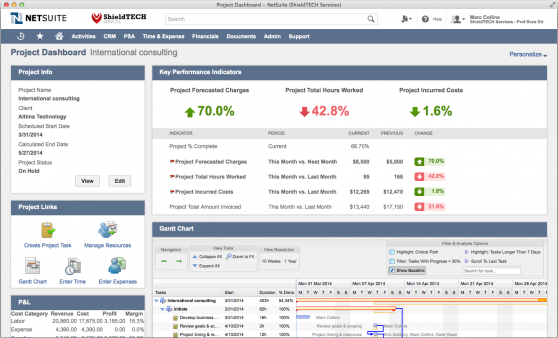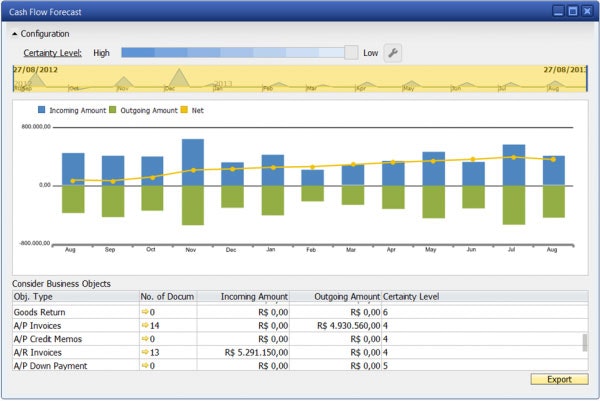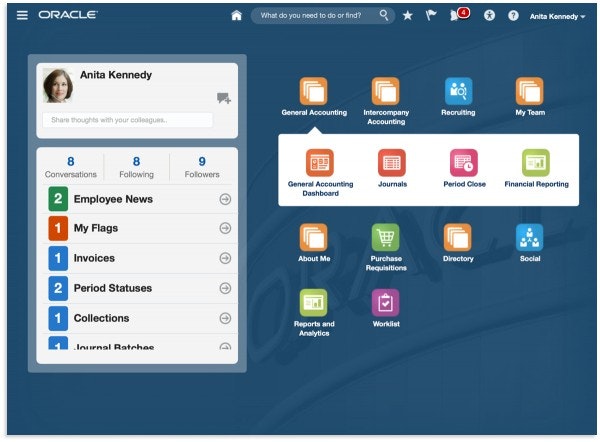How Much Does ERP Implementation Cost?
In general, the price of enterprise resource planning (ERP) software can cost anywhere from 100 to 250 percent of the software license cost for implementation. The total price includes the software license, the number of users, renewal fees, training, customizations, number of features deployed, maintenance and upgrades.
In this article, we break down why implementation can cost this much and how you can figure out your total cost.
We’ve also provided a simple tool that’ll help you calculate your cost and choose a suitable solution.
Here are the main factors that determine how much an implementation will cost:
System architecture: Some ERP systems are simply more costly to customize and implement due to their design, advanced features offered and out-of-the-box modules being provided by the vendor. Most “all-in-one” solutions that bundle multiple features could also be more costly than using just a specific ERP feature.


The detailed project dashboard in NetSuite
Number of users: More users often means you’ll pay more for the initial license as well as additional system upkeep. Larger organizations with many users across departments may require greater functionality and customization, which drive up costs.
In-house vs. outsourced implementation services: If your organization is smaller and you have an adept IT team, you may not need to hire a third-party implementation service. But in most cases, companies should retain a third-party service that has expertise with implementing the selected platform.In its “Market Share Analysis: ERP Software, Worldwide, 2016” report (content accessible to Gartner clients), Gartner notes that without a strong data management and governance policy, integration using open API standards could lead to inconsistencies in integrations. Having a smooth integration would require prepackaged integration from providers and informed users. In-house IT teams may not always be equipped or knowledgeable.
Applications and level of customization required: The more applications and customizations you need, the more the implementation will cost. Some industry verticals will have more complex requirements. For example, an accounting firm will likely need fewer applications and customizations than a chemical manufacturer. In addition, there could be discounts in using cloud applications over on-premise options. The previously mentioned Gartner report noted that in 2016, many ERP vendors moved their model to software-as-a-service (SaaS) and offered discounted migration services or lower subscription pricing. These incentives pushed many hesitant, but willing customers to upgrade to SaaS or replace their solution.


Basic cashflow forecast in SAP Business One
Migration: If you’re using an older, proprietary system or several disparate systems, it could cost more to migrate your business data to the new ERP system. However, this may be an upfront cost that could be recovered in the long term. You should talk with your vendor about perceived cost benefits over the short- and long terms.


The homepage in Oracle Financials ERP Cloud
Gartner’s report “Postmodern ERP Is a Vital Foundation for Digital Business, and ERP Leaders Must Implement a Postmodern ERP Strategy” (content available to Gartner clients) predicts that 75 percent of all businesses will be digital businesses or will be preparing to become one by 2020. ERP is one of the top five priorities of businesses, so it’s vital to avoid a limited or clunky system that reduces productivity.
With those factors in mind, here is a calculator tool that will give you an approximate implementation cost.
Instructions: Simply click on the white boxes to enter your data using the dropdown.
Next Steps
This tool should help you get started on the pricing estimation process. However, this is just an estimation and not the actual cost. Each vendor may charge differently for different services based on their rates. Here’s what you can do next:
Develop a shortlist of vendors and demo the software: Take a look at our FrontRunners for ERP software to better understand the market and identify the software options that best fit your needs and resources.
Check if your shortlisted solution falls within your budget: It’s best to demo a couple of vendors so that you can negotiate the best price for implementation. While negotiating the per user cost may not always be possible, other factors may be. For example, the vendor could offer you free training or cheaper maintenance for the first year.
Talk to an advisor for more information: Our advisors can provide detailed information on various vendors and pricing. Call them to get a free FastStart consultation at (844) 680-2046.